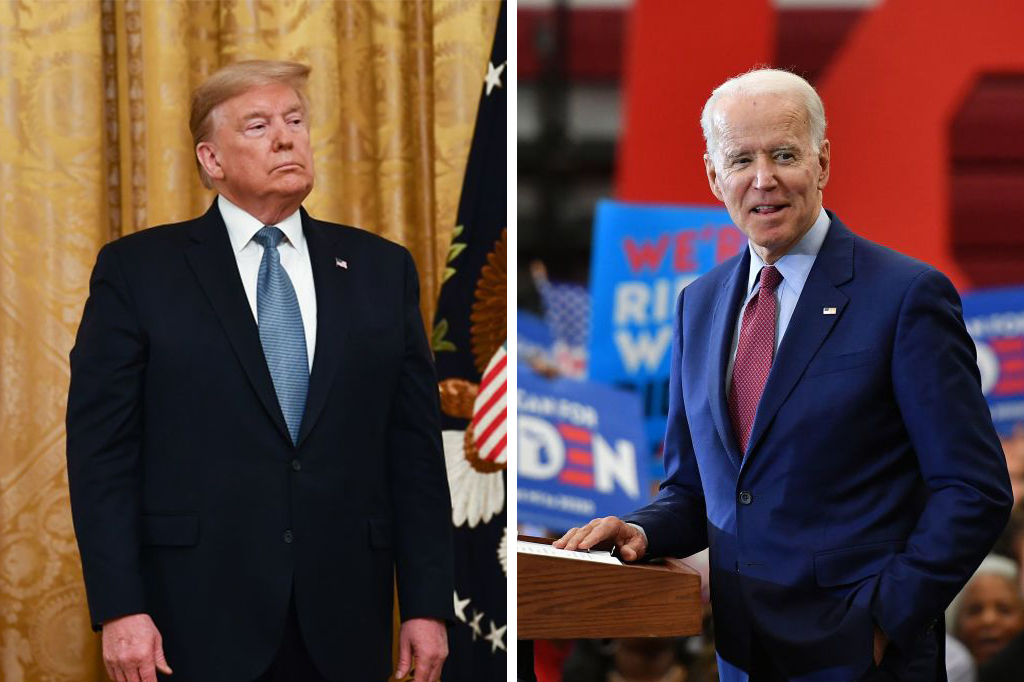With just under six months to go, now is a good time to assess where things stand in the 2020 presidential election. You would think that with the Wuhan virus pandemic, predicting the outcome of the 2020 election would be even harder than normal. Given the sheer ‘redness’ and ‘blueness’ of most states, however, the only meaningful change will occur in the 10 or so states we’ve categorized as battleground states over the last five elections.
Historically, the last real landslide presidential election occurred in 1988 when George H.W. Bush won 40 states and 426 electoral votes as he earned 53.6 percent of the popular vote. Bill Clinton’s 370 electoral votes in 1992 papered over the fact he only received 43 percent of the popular vote. He upped his electoral vote victory by nine votes in 1996 yet still failed to garner 50 percent of the popular vote.
George W. Bush’s five-point electoral vote squeaker in 2000 came with losing the popular vote by half-of-a-percent. He managed to add 16 Electoral Votes in 2004 when he hit 50.7 percent of the popular vote. In 2008, Barack Obama nearly matched Clinton’s 1992 electoral vote total at 365 votes despite hitting almost 53 percent of the popular vote. Obama lost ground in 2012 when he only managed to secure 332 electoral votes in his four-point victory. Of course, Donald Trump’s managed to top 300 electoral votes in 2016, but lost the popular vote by two percent.
As this rundown shows, since Bush’s 1988 landslide, neither party has come anywhere close to winning a landslide, as most of the states became reliably red or blue over the last 32 years. That fact means most of the states won’t really be up for grabs during the 2020 election.
In the red column, you can fully expect these states to go for Trump:
Alabama, Alaska, Arkansas, Idaho, Indiana, Iowa, Kansas, Kentucky, Louisiana, Mississippi, Missouri, Montana, Nebraska, North Dakota, Oklahoma, Ohio, South Carolina, South Dakota, Tennessee, Texas, Utah, West Virginia and Wyoming.
These 23 states possess 188 electoral votes of the 270 electoral votes needed to win. While Texas may be shifting to purple due to demographics, that shift won’t happen in 2020. Republicans still dominate the state and federal races in the Lone Star state.
The 18 blue states are:
California, Colorado, Connecticut, Delaware, District of Columbia, Hawaii, Illinois, Maine, Maryland, Massachusetts, Minnesota, New Jersey, New York, Oregon, Rhode Island, Vermont, Virginia and Washington.
These states total 218 electoral votes. Pundits like to proclaim that Colorado and Virginia are purple states, but the big races prove otherwise. In Virginia, Republicans haven’t won a race for the presidency, governorship, or US Senate since 2000, 2009, and 2002, respectfully. The swelling of liberals in Northern Virginia over the last 20 years has simply overwhelmed conservative voters in southern Virginia. Colorado looks much the same due to the influx of liberal Californians starting in the late 1990s. Other than Cory Gardner’s upset US Senate win in 2014, no other Republican has won top-of-the-ticket races since 2002.
That leaves just 10 states with 132 electoral votes for the two parties to fight over during the general election. These states are: Arizona, Florida, Georgia, Michigan, Nevada, New Hampshire, New Mexico North Carolina, Pennsylvania and Wisconsin. Trump won six of the 10 in 2016.
Given the current dynamics, Trump likely will win Florida, Georgia, New Hampshire and North Carolina in 2020, with Biden favored again in Nevada and New Mexico. That would give Trump a 252 to 229 advantage with just Arizona, Michigan, Pennsylvania and Wisconsin to decide the election. To win the White House, Biden would need to win Pennsylvania and two of the remaining three, as Trump would need to win just Pennsylvania or two of the other three to secure his reelection. Thus, Trump’s pathway to 270 electoral votes isn’t as treacherous as Biden’s road.
Biden also has to successfully navigate rough vice presidential running-mate waters. With his pledge, we know his running mate will be a woman. Some on the left believe he needs to have an African American on the ticket to repeat Obama’s high watermark on African American voter turnout. Kamala Harris would be an obvious choice except that she comes from deep-blue California and didn’t seem to attract much of the African American vote in the Democratic primaries. Stacey Abrams is on the list, as well, and hails from Georgia, but her resume is very thin and her strident positions could alienate moderate suburban voters, especially if those voters are concerned with Biden’s health given his age.
If his advisers think given his strong support in South Carolina among African American voters that Biden doesn’t need a woman of color to generate turnout, then Gov. Gretchen Whitmer from Michigan and Sen. Amy Klobuchar from Minnesota are high on the list. Klobuchar is reportedly being ‘vetted’ as I write. Whitmer comes from a key state Biden likely needs to win, but her heavy-handedness during the response to the Wuhan virus pandemic has hurt her among Michigan voters. That would make Klobuchar the safest, least controversial pick. We should know in the next 10 days or so who Biden asks to join the Democratic ticket.
Given how much has happened in the last six months and the utter unpredictability inherent with the pandemic, it is possible my analysis will miss the mark. History, however, indicates otherwise. Regardless, even if things turned solidly one way or the other, the vast majority of states will remain in the red or blue column as in past years. At best, Trump or Biden would top-out at around 320 electoral votes, ensuring that America remains a very divided country over the next four years.


















